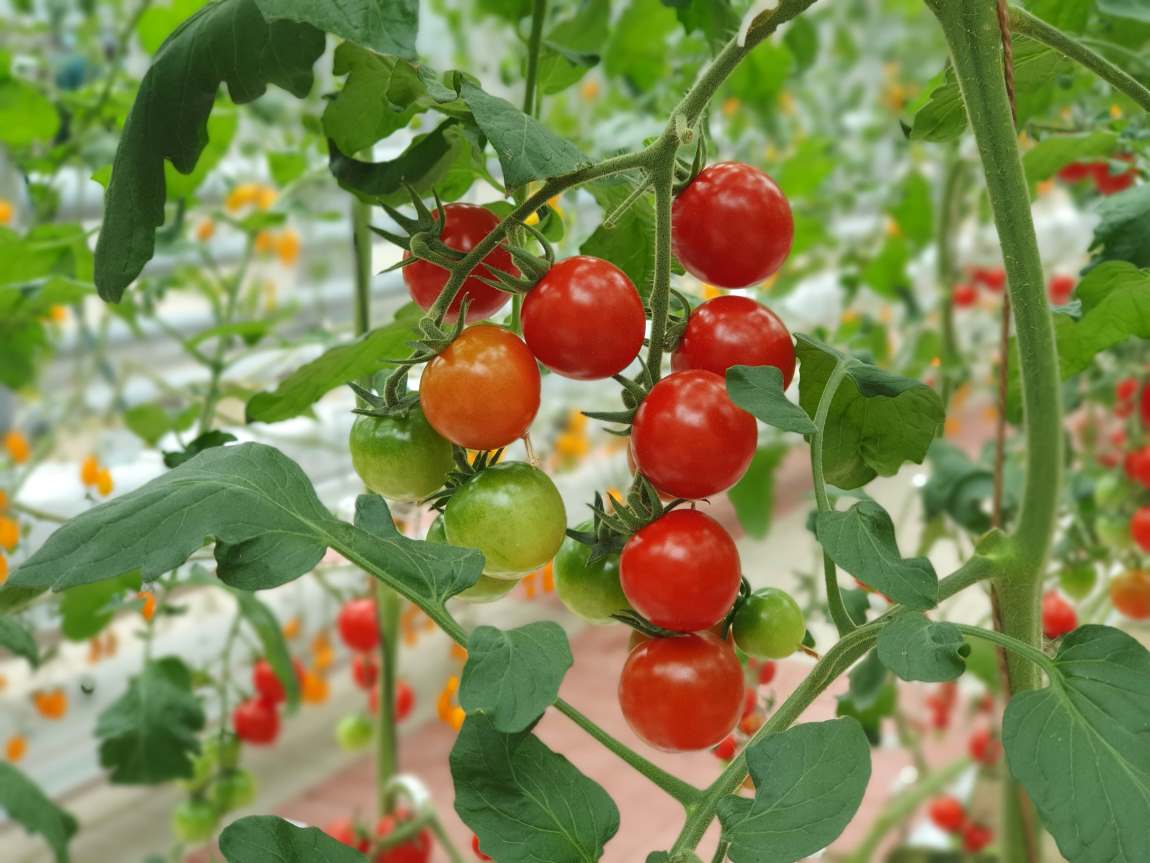How can we provide healthy, vitamin-rich food to growing urban populations? One solution is to cultivate crops indoors, in stacked layers of growing platforms. Such vertical farms offer several advantages over traditional farming, but currently need a lot of energy to create light, air flow, and other conditions for growing crops.
Kaiser et al. advocate for a shift in how these conditions are maintained. Instead of keeping them constant, as is the current practice, their Frontiers in Science lead article argues for “dynamic environmental control”—where different factors are continuously adjusted according to real-time plant needs and external considerations such as electricity prices. This explainer outlines how this approach could make vertical farms more productive and profitable, and the developments needed to support it.
What is vertical farming?
Vertical farming involves cultivating crops inside, in stacked layers and under tightly controlled conditions for light, temperature, humidity, and other environmental factors. The technique is mostly used for growing leafy vegetables like herbs and microgreens, but is increasingly applied to fruit crops, edible flowers, and seeds.
What are the benefits of vertical farming?
In contrast to open-field farms, vertical farms provide consistent yields and crop quantity no matter the season or where the farm is located. They also use less water and nutrients—and can achieve higher yields, better quality, improved food safety, and lower losses. Furthermore, vertical farms can be built close to urban areas, which can reduce food transportation costs and carbon footprints associated with long supply chains.
What are the benefits of varying environmental conditions in vertical farms?
The authors document a range of evidence showing how changes to different environmental factors can help optimize the efficiency and yield of vertical farming systems.
- Reduced electricity costs: Dynamic environmental control can reduce the high operational costs of current vertical farming systems—especially electricity costs for artificial lighting, which make up a large part of total costs. The authors developed a novel model of photosynthesis to show that varying daily light intensity according to electricity prices could reduce lighting costs by 12% without affecting plant growth. Subsequent tests on basil, pak choi, and other leafy greens confirmed that this strategy did not affect yield. Similarly adjusting temperature, CO₂ level, and air flow according to electricity prices could additionally reduce costs.
- Enhanced yields: Crop growth can be refined by modifying various factors throughout the day or according to plant development stage. For example in tomatoes, changing the electrolyte concentration of nutrient solutions between day and night was shown to increase fruit yield and plant biomass. Photosynthesis can be optimized by exposing young plants to high light intensity to encourage leaf expansion. Growth, flowering time, and fruit development can also be adjusted and optimized by pulsing different light wavelengths, altering “day” length, and creating day/night differences in temperature and CO₂ level.
- Enhanced product quality: Optimizing crop quality—such as nutrition, shelf life, and visual appeal—can sometimes reduce yield. Dynamic control can overcome this by switching from growth-enhancing to quality-enhancing conditions just before harvest. Examples include boosting healthy flavonoids by increasing exposure to blue light and boosting vitamin C by applying high light intensity. Changes to air flow, relative humidity, and/or nutrient solutions near harvest time may also reduce conditions like “tipburn” in lettuce, improving the marketability and shelf life of the harvested product.
What are the next steps for optimizing vertical farming?
The authors identify four crucial developments for widespread adoption of dynamic environmental control in vertical farming systems.
- Filling knowledge gaps: Many of the effects listed above were shown in experiments and/or for single plant species. Further research is needed to understand the mechanism of these effects, confirm their application to the full crop growing cycle at canopy scale, and define crop-specific conditions for optimal yield and product quality.
- Monitoring systems: To respond to real-time plant needs, vertical farms will need a combination of different sensors to measure plant processes at large scales, like growth, as well as track individual plants over time. The authors’ analysis of current sensors highlights the range of options available—including optical sensors, sap flow meters, ultrasound microphones, and electronic “noses”. The authors emphasize the need for affordable sensors with enough spatial and temporal resolution to make informed decisions. They also point out that sensor data need to be curated, analyzed, and interpreted correctly, which remains a bottleneck.
- Advanced modeling: Mathematical models will play a crucial role in integrating data from different sensors to quickly optimize growing conditions on-the-fly. Models of canopy photosynthesis, for example, would help determine the optimal light intensity for both maximal productivity and energy efficiency.
- Crop breeding: Developing specific crop varieties for vertical farms represents a huge opportunity. One approach is to breed for traits suited to the indoor environment, such as high photosynthesis efficiency in artificial light conditions. Another is to take advantage of the shorter supply chain. Instead of breeding for shipping quality and long shelf life, as is the case for open-air farms far from consumers, crops for vertical farms could be bred for flavor and texture.
The authors emphasize that farms, monitoring systems, models, and breeding programs must continuously work together to optimize cost-effectiveness, resource use efficiency, and product quality—and so drive the future success of vertical farming systems.
Journal Reference:
Kaiser E, Kusuma P, Vialet-Chabrand S, Folta K, Liu Y, Poorter H, Woning N, Shrestha S, Ciarreta A, van Brenk J, Karpe M, Ji Y, David S, Zepeda C, Zhu X-G, Huntenburg K, Verdonk JC, Woltering E, Gauthier PPG, Courbier S, Taylor G and Marcelis LFM, ‘Vertical farming goes dynamic: optimizing resource use efficiency, product quality, and energy costs’, Frontiers in Science 2 :1411259 (2024). DOI: 10.3389/fsci.2024.1411259
Article Source:
Press Release/Material by Frontiers
Featured image credit: wirestock | Freepik




